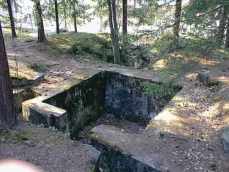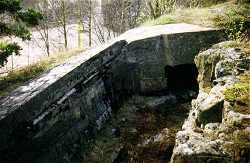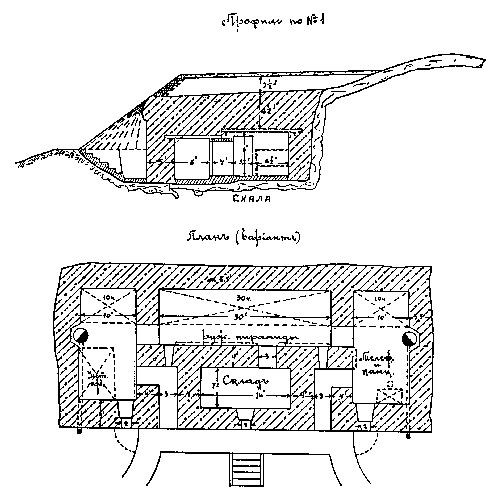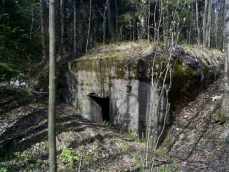
Concrete shelters. Other is unfinished without roof. (1999 and 1998)The simplest dugouts were made in the ground using wood as a reinforcement. This kind of shelters are nowadays just holes in the ground. All wooden parts are vanished. Small frontline shelters were built using concrete. Inside area is on the average four square meters. Roofs were strengthened using steel bars, which were blown out for scrap metal after the war.
There is also shelters were inner walls and roof were made using wooden balks and outer walls and roof were concrete ones. Walls situated on the trench side were made only using wood. At present you can find this kind of shelters still in the land front. All wooden parts have been vanished but concrete walls and roof standing still.
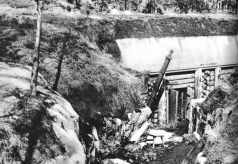
Shelters with wooden walls. Black and white picture from Leppävaara 1918 (Picture from the book: Suomen vapaussota kuvissa - II osa, Otava 1934). In the color picture similar kind of shelter without wooden parts, Leppävaara object XXIX:3. (1983)Biggest shelters were made first using stones, concrete and wood later only concrete. Stone wall shelters roofs have double layer of wooden balks covered with the layer of concrete. Later wooden parts rottened and roofs were collapsed. Nowadays these kind of shelters are only big mounds where you can recognize parts of the stone walls, for example shelter for the telephone central of Lepola, object XXII:2.
Big shelters were built in the end of the war using only concrete and steel. There were usually three or maybe more rooms in the shelters. Thickness of the concrete roofs were about two meters and they were strengthened with steel balks. Big concrete shelters could be find in Haltiala, object XVII:2. Steel balks were blown up, but the thick concrete roof still existence. There are few other big size shelters in the same defense position.
Shelter for 50 men. Left: bunks for 10 men and for non-commissioned officer. Middle: bunks for 30 men and rack for rifles. Right: bunks for 10 men, office and telephone. Between entrances is store. Drawing was dated in Oulunkylä 9.12.1916. (Detail from Russian construction drawing 1570, National Board of Antiquities, archives of the Department of Monuments and Sites)
Previous page - Main page - Land front page - Next page
© 2000
